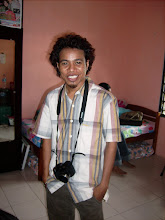Traditional architecture Java House
Typology home or residence often called "Omah", the shelter is intended for people on the island of Java. It covers the life of the 3 conditions as a living expression of the need for adequate clothing (clothing that is reasonable), Food (eating and drinking) and Board (residence). For the third condition, namely the need for housing must be met for it as a requirement to achieve a prosperous life, as if already have their own houses so they will not rent a place of shelter or often called "ngindhung". Formation is a simple expression of simplicity of life masyarakaat it. It may be seen from the depiction of the blueprint is quite simple. Usually the form of a blueprint that is applied to the square-shaped square and rectangular. This is in accordance with the aesthetics of living people who have bred firmness in carrying out the principle of responsibility of his life. While the typology of rounded or oval blueprint does not exist in the form of a blueprint home-bred people live. The form of this four-square in its development experience with the addition of a change-room addition on the side of the building and keep the unity of the form of sketch square.
Based on the history of the development of home-bred person can live dikategorikaan into 4 types of derivative mendasarinya as a form of housing. That is the traditional home of "Panggangpe", the form of "village", the form of "Limasan" and form "Joglo". Traditional forms of home "Tajug" is not used as a dwelling house, but used as a house of worship. Actual form of the above category separate based on differences in the formation of the roof as described below:
Traditional forms of house Java Panggangpe
House "panggangpe" is a form of buildings and even the most simple form is a basic building. Building "panggangpe" This is the first building to be used for shelter from the wind disturbance, cold, hot sun and rain. The building has a simple form of a basic form of a pillar or "saka" as much as 4 or 6 pieces. Are on the side wall surrounding a given just to keep out the weather or the environment around it can be said as a form of protection is a more private nature of the disturbance. On the development of the home "panggangpe" this change to be a variation of another formation, approximately 6 formation as a result of the development of the form that is simple.
(Picture below Java House Cuisine Panggangpe Main)

Source Books: "Architecture Traditional Yogyakarta", the Ministry of Education and Culture of Indonesia, Jakarta, 1998.


0 komentar:
Posting Komentar